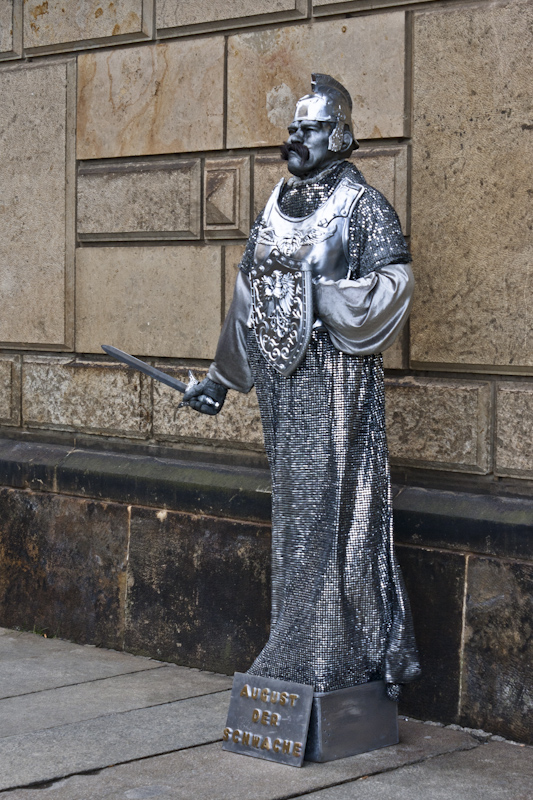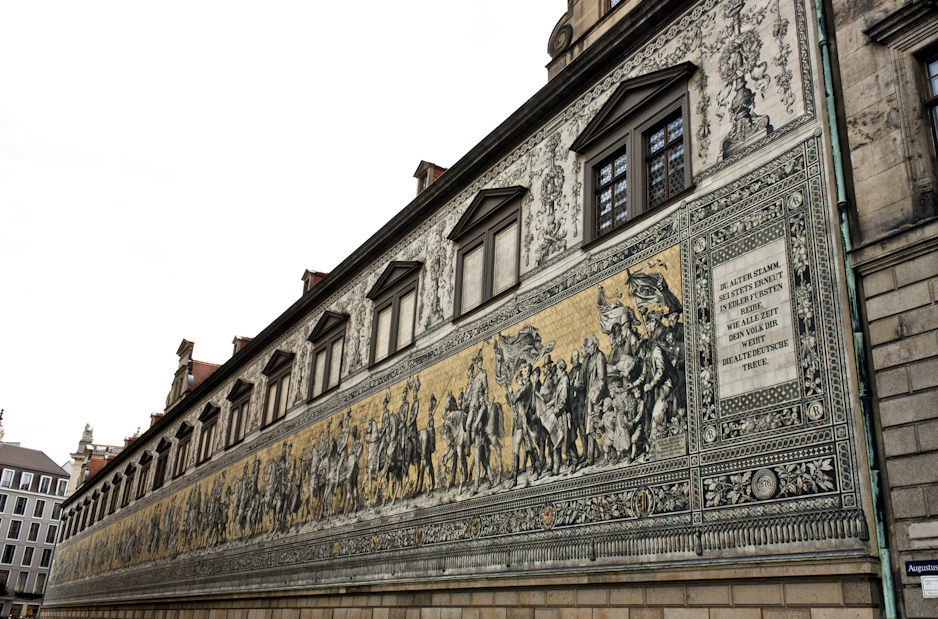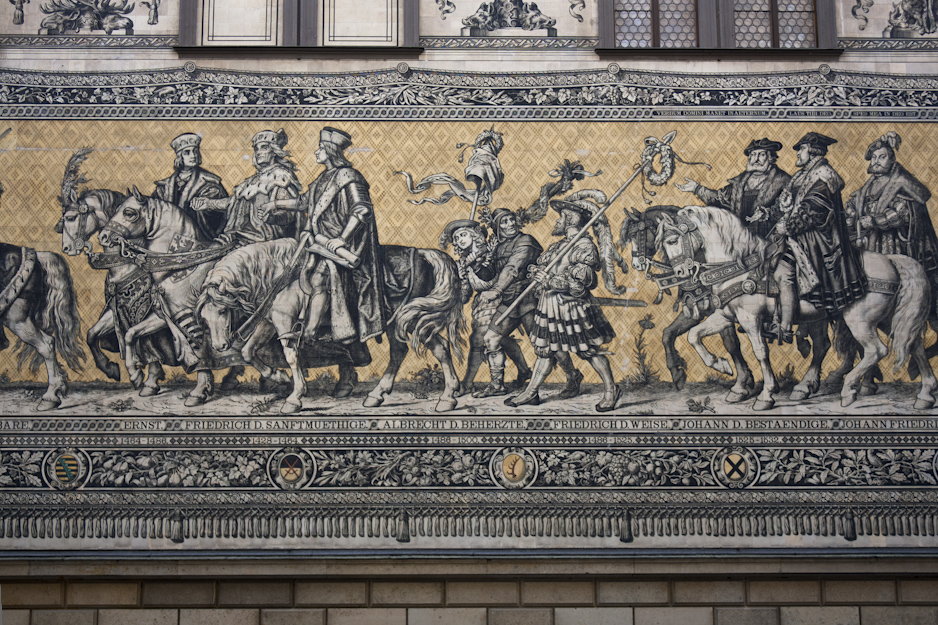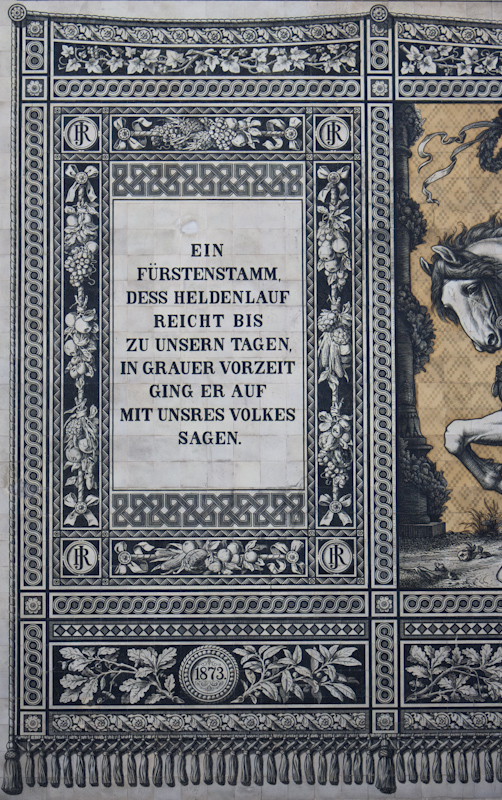Dresden 2: The Old City
Dresden was the seat of the Houses of Wettin, which ruled the state of Saxony as well as parts of neighbouring Anhalt and Thuringia for about 800 years. This was plenty of time to build lots of nice buildings, which were what was restored after the war.
Wettin contributed Prince Albert of Saxe-Coburg and Gotha, the husband of Queen Victoria I, to the British monarchy. Unfortunately for the noble House the Brits decided that 'Wettin' sounds a bit silly in English so they were going to use Windsor instead.
Dresden 2: Die Altstadt
Dresden war die Heimat das Haus Wettin, das für 800 Jahre Sachsen und Teile von Anhalt und Thüringen geregelt. Es gab viele zeit, schöne Gebäude zu bauen, die war nach der Krieg umgebaut.
Wettin trug Prinz Albert von Saxe-Coburg und Gotha, der Mann von Königin Victoria I, zu der britisch Monarchie. Leider für das adeliges Haus, die Briten entscheiden dass Wettin klingt ein bisschen blöd auf Englisch, also die würden Windsor anstelle benutzen.
Date: 10 Feb 2012
Location: Dresden, Sachsen, Deutschland
-

-

-

August der Schwache (August the Weak)
-

You could give him some coins and he would wave his sword around a bit.
-

The beautiful tile mural above him.
-

I can't translate what it says here; it's old, poetic German.
-

The mural depicts the Princes of the House of Wettin, the monarchy of Saxony, from 1123 to 1904.
-

Wettin ruled Saxony and Thuringen for about 800 years. Members of the family ascended the thrones of a variety of other European monarchies.
-

-

-

Friedrich August the Just.
-

-

-

-

-

-

The wide, placid Elbe river.
-

-

Die Frauenkirche / Church of Our Lady. Rebuilt from 1993 to 2005, with €180 million in donations. Günter Blobel, who won the Nobel Prize for medicine, donated almost the entire $1 million to the cause.
-

-

-

Weinachtsmarkt, an der Frauenkirche
-

